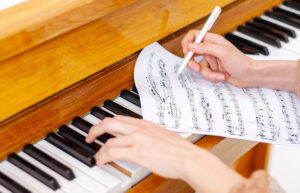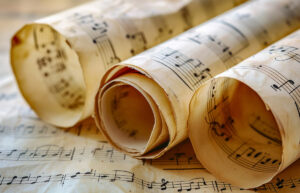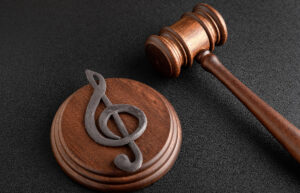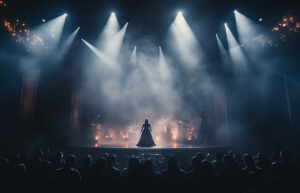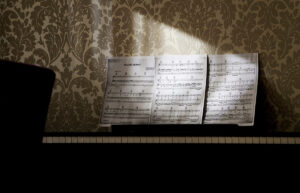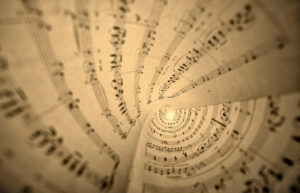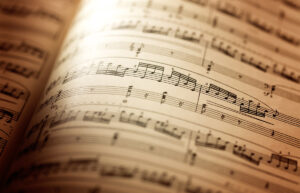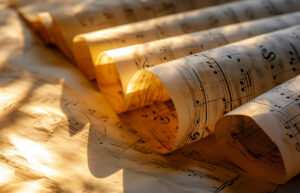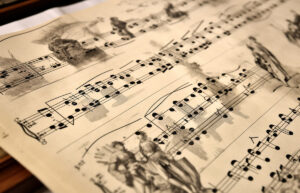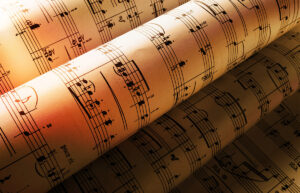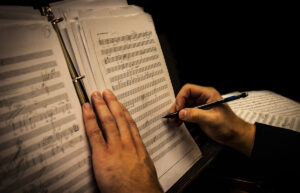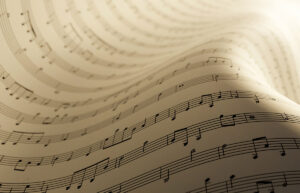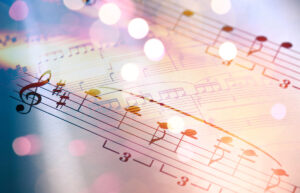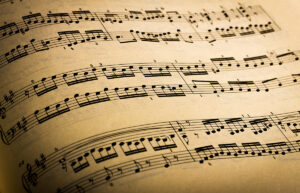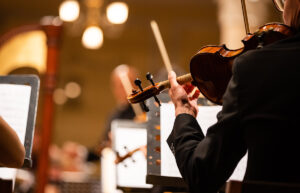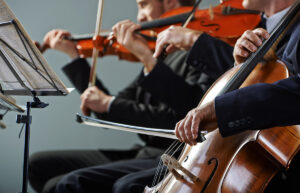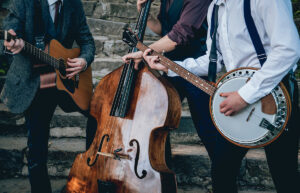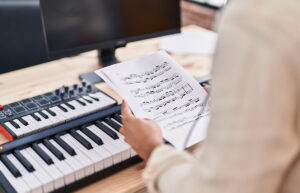Understanding Musical Measures: A Beginner’s Guide

Learn the fundamentals of music with the help of our comprehensive guide for beginners. Find out what a measure is in music, and understand what a bar is in music. Master the fundamentals of musical structure to lay a strong foundation for your musical journey. This comprehensive guide breaks down the fundamentals, enabling you to comprehend the structure and rhythm of your favorite songs. Start the musical journey right away!
Welcome to TheDemoStop, now join the community!
Connect with artists, fans and producers around the world.
What is measure in music?
A measure in music is a way to organize and group musical notes and beats. It breaks up the music into short pieces called measures. Each measure is a musical “container” with a set number of beats, maintaining rhythm and timing. Measures help musicians keep track of the music’s structure and play in sync.
History of measures in music
The evolution of music notation provides a fascinating journey through time, revealing shifts in rhythms and notational systems. While ancient Greek and Roman musical notations didn’t employ measures to divide time, the Middle Ages introduced mensural notation. This system incorporated square-shaped note heads to represent rhythmic values, complemented by small vertical lines or dots to denote note division measures. This early system served as the precursor to modern music notation.
In the 1300s, during the Renaissance, Franco of Cologne introduced pivotal changes in measuring music. He introduced concepts like time signatures and barlines, simplifying the understanding of rhythm for musicians. The Baroque period (1600 – 1750) saw measures and time signatures become more standardized, with composers like J.S. Bach using them to create intricate and well-structured compositions.
During the Classical and Romantic periods, composers like Beethoven and Mozart utilized measures to provide balance and symmetry to their works. In the 20th century, composers began experimenting with irregular meters, blurring the concept of measures. This opened up new avenues for musical expression.
Modern composers are delving into intricate rhythmic patterns and polyrhythms, signifying an ongoing evolution in the concept of measures in music. This historical progression demonstrates how musical expression is constantly in flux, with creators always striving to encapsulate the essence of time within their compositions.
What is the purpose of measures in music?
- Rhythmic stability: Measures are foundational for maintaining a consistent rhythm. They ensure that all musicians within an ensemble stay synchronized, creating a cohesive musical performance.
- Structural organization: Measures act as a navigational tool for musicians. They provide clear markers, enabling performers to identify their position within a piece and know when to initiate, conclude, or repeat sections.
- Universal communication: Measures establish a universal language for musicians. Regardless of their proficiency level, musicians can adhere to the same set of rules, ensuring accurate and harmonious renditions of a composition.
- Pattern formation: Composers utilize measures to craft intricate rhythmic and melodic patterns. These patterns infuse the music with structure and predictability, adding depth and coherence to the composition.
Importance of understanding measures in music
Mastering musical measures is fundamental for aspiring musicians. Here’s why grasping this concept holds paramount importance:
- Precision in performance: Proficiency in recognizing musical measures allows for precise execution during performances. Knowing when to initiate and conclude, particularly for soloists and ensemble players.
- Sheet music proficiency: Recognizing measures is integral to accurately reading sheet music. It enables musicians to seamlessly follow the notations, rhythms, and time signatures provided in the sheet music.
- Facilitating group dynamics: Collaboration is a common aspect of musical endeavors. A robust grasp of measures ensures synchronized and harmonious performances within a group, fostering cohesion and synchronicity.
- Genre versatility: Various musical genres may employ measures in distinctive ways. Acquiring this knowledge grants flexibility, enabling musicians to adapt and excel across diverse musical styles.
Welcome to TheDemoStop, now join the community!
Connect with artists, fans and producers around the world.
How to read a measure of music
To read a measure of music correctly, you need to know a few basic things:
Time signature
The time signature is a numerical symbol located at the start of a piece of sheet music. It specifies the number of beats per measure and the note that receives one beat. Common time signatures include 4/4 (four beats per measure) and 3/4 (three beats per measure)
Tempo
Tempo refers to the speed at which a musical piece is performed. It is similar to a song’s tempo, which determines whether it is a fast, lively piece or a slow, melancholy one. Tempo indications are frequently written in Italian, with terms like ‘Allegro’ and ‘Adagio’ for fast and slow tempos, respectively.
In conjunction with the time signature, the tempo enables musicians to play a piece at the correct speed.
Note Values
In music, notes signify the duration of sounds. They come in various values, indicating how long a note should be played. Common note values include whole, half, quarter, and eighth notes, each with a specific duration.
For instance, a whole note encompasses the entire duration of a measure, while a quarter note in a 4/4 time signature signifies one-fourth of the measure’s duration. A solid grasp of note values is indispensable for accurately interpreting musical compositions.
Bar Lines
Bar lines are vertical lines delineating one measure from the next within a staff. They act as visual markers, setting the boundaries for each measure. When reading sheet music, bar lines signal the commencement and culmination of a measure, enabling musicians to maintain the rhythm accurately. For composers, arrangers, and performers alike, bar lines play a crucial role in visually structuring the composition.
5 Types of bar lines vs. measures
Understanding the various types of bar lines is crucial for reading and analyzing sheet music. These lines provide musicians with specific instructions that affect how a piece is performed.; Let’s explore the five common types:
Single Bar Line
A single bar line is the simplest type of bar line. It is used to separate regular measures in a piece of music. When you see a single bar line, you know that a new measure has begun. It’s like the start of a new musical sentence.
Double Bar Line
The double bar line is a more significant marker, typically appearing at the end of a section or the entire composition. A double bar line indicates the conclusion of a musical idea, similar to a paragraph break in a book.
Start Repeat
Two dots are placed on either side of a single bar line to denote start repeat lines. They denote the start of a repeated section in the music. When this symbol appears, you must return to the previous start repeat sign and replay the section.
End Repeat
Similar to start repeat lines, end repeat lines consist of two dots and a single bar line. However, they appear at the end of the section that is repeated. When you see the end repeat symbol, the repeated segment has concluded.
End Bar Lines
The end bar line signifies the end of a piece of music. It is frequently used in conjunction with a double bar line to denote the conclusion of the composition. When you reach an end bar line, the music has reached its conclusion.
Examples of measures in music
Let us look at a couple of examples to show how measures function in actual music:
‘Ode to Joy’ by Ludwig van Beethoven: This iconic piece of music is in 4/4 time, meaning each measure contains four beats. Each line of the lyrics corresponds to a measure of the music.
‘Clair de Lune’ by Claude Debussy: This gentle piano piece is in 9/8 time, meaning each measure contains nine beats. The melody flows smoothly through the measures, evoking a sense of peace and serenity.
‘Bohemian Rhapsody’ by Queen: This epic rock song contains multiple time signatures, including 4/4, 3/4, and 6/8. Throughout the song, the changes in time signature help build drama and excitement.
Welcome to TheDemoStop, now join the community!
Connect with artists, fans and producers around the world.
Conclusion
Understanding what is a measure in music is fundamental for anyone embarking on a musical journey.
What is measure in music?
A measure in music is a way to organize and group musical notes and beats. It breaks up the music into short pieces called measures.
History of measures in music
Ancient Greek and Roman music didn’t have measures. The significant leap in organizing music came in the 1300s with Franco of Cologne, who introduced time signatures and barlines. This greatly aided musicians in understanding rhythm. Measures and time signatures became standard during the Baroque era (1600-1750) and were used by composers like J.S. Bach for intricate compositions.
What is the purpose of measures in music?
- Maintaining Rythm
- Organization
- Communication
- Creating Patterns
Importance of understanding measures in music
- Playing Correctly
- Reading Sheet Music
- Collaborating with Others
- Exploring Different Genres
How to read a measure of music?
To read a measure of music correctly, you need to know a few basic things:
- Time Signature
- Tempo
- Note Values
- Bar Lines
5 Types of bar lines Vs. measures
Understanding the various types of bar lines is crucial for reading and analyzing sheet music. These lines provide musicians with specific instructions that affect how a piece is performed.
- Single Bar Line
- Double Bar Line
- Start Repeat
- End Repeat
- End Bar Lines
Examples of measures in music
Let us look at a couple of examples to show how measures function in actual music:
- ‘Ode to Joy’ by Ludwig van Beethoven
- ‘Clair de Lune’ by Claude Debussy
- ‘Bohemian Rhapsody’ by Queen
FAQs
What is measure in music?
A measure, which is also written as a bar, is a piece of music that is separated by vertical lines called bar lines. The length of a measure is determined by the time signature. Measures allow musicians to keep track of their position in the song and play in time.
What does measure in music mean?
A measure is a unit of time within a piece of music. It is also known as a bar. It is defined by a specific number of beats and separated from other measures by vertical lines known as bar lines. Measures allow musicians to keep track of their position in the song and play in time. They also help to create a sense of rhythm and pulse in the music.
What is the purpose of a measure in music?
The purpose of a measure in music is to separate the notes into smaller units. The music is now simpler for musicians to read and perform. Set up a rhythmic framework that is constant. This enables musicians to play in time and with the beat. Give the music a sense of form and structure. Measures can be used to create various patterns and sections within a piece of music.
What is the history of measures in music
The history of musical measures dates back to ancient Greece, where musicians used rhythmic patterns to accompany poetry and dance. The first written system of musical notation, developed in the eleventh century, separated groups of notes with vertical lines. The modern system of measures and bar lines emerged in the 15th century.
How to read a measure of music?
To read a measure of music, you need to know each note’s time signature and value. The time signature tells you how many beats are in each measure and what type of note gets one beat. The value of each note tells you how long it lasts.
What is Time Signature?
A time signature in music is a fraction that specifies the type of note that constitutes each beat and the number of beats in each measure. The top number indicates the number of beats in each measure, and the bottom number specifies the kind of note that constitutes one beat.
What are the different types of Bar Lines?
Single, double, and final bar lines are the most common. Other bar lines include repeat, once-only, and twice-only bar lines.
What is tempo?
Tempo is the speed or rhythm of a musical piece. It is measured in BPM (beats per minute). A greater BPM indicates a quicker tempo, whereas a lower BPM indicates a slower tempo.
Why are measures in music important?
Musicians can keep time, understand rhythm, and distinguish different parts of the music by using measures. They also help make the beat and rhythm clear.
What is an example of a measure in music?
A measure is a segment of music bounded by two bar lines. The time signature determines the duration of a measure. In a 4/4 time signature, each measure contains four beats. The first measure of “Happy Birthday to You” serves as an example of a musical measure. This measure contains two half notes or four beats in 4/4 time.






